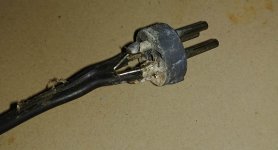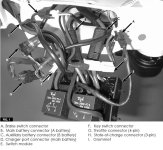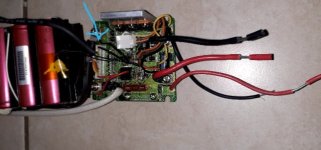adh247
10 mW
- Joined
- Jan 8, 2020
- Messages
- 26
Bought a used A2B Metro but the charger just flashes red and green regardless of it being plugged in or not. Anyone have any idea why? This is my first e-bike so I'm kinda new to this but so have electronic know how. I'm just not sure where to start. It also does not show any lights by the throttle. Any help would be hugely appreciated!
Here's a GIF of what it doing:]https://i.imgur.com/fyNSVJ0.gifv
I just noticed the tip of the XLR charger plug was missing a screw so I took the other one out to see if any wires were loose and was met with this:
https://i.imgur.com/sURsk7M.jpg
But I have since cleaned it.
https://i.imgur.com/v8wJPwr.jpg
Also, When I tested the output of the charger via the XLR plug, I get this as the voltage reading, but i dont know if its supposed to do that or not. https://media.giphy.com/media/eNYmf4NLP2a8oiwWUb/giphy.gif
Any ideas or suggestions? I'm really new at ebikes, so i'll take all the help i can get.
I'm basically trying to determine whats bad, the charger or the bike,
Here's a GIF of what it doing:]https://i.imgur.com/fyNSVJ0.gifv
I just noticed the tip of the XLR charger plug was missing a screw so I took the other one out to see if any wires were loose and was met with this:
https://i.imgur.com/sURsk7M.jpg
But I have since cleaned it.
https://i.imgur.com/v8wJPwr.jpg
Also, When I tested the output of the charger via the XLR plug, I get this as the voltage reading, but i dont know if its supposed to do that or not. https://media.giphy.com/media/eNYmf4NLP2a8oiwWUb/giphy.gif
Any ideas or suggestions? I'm really new at ebikes, so i'll take all the help i can get.
I'm basically trying to determine whats bad, the charger or the bike,




